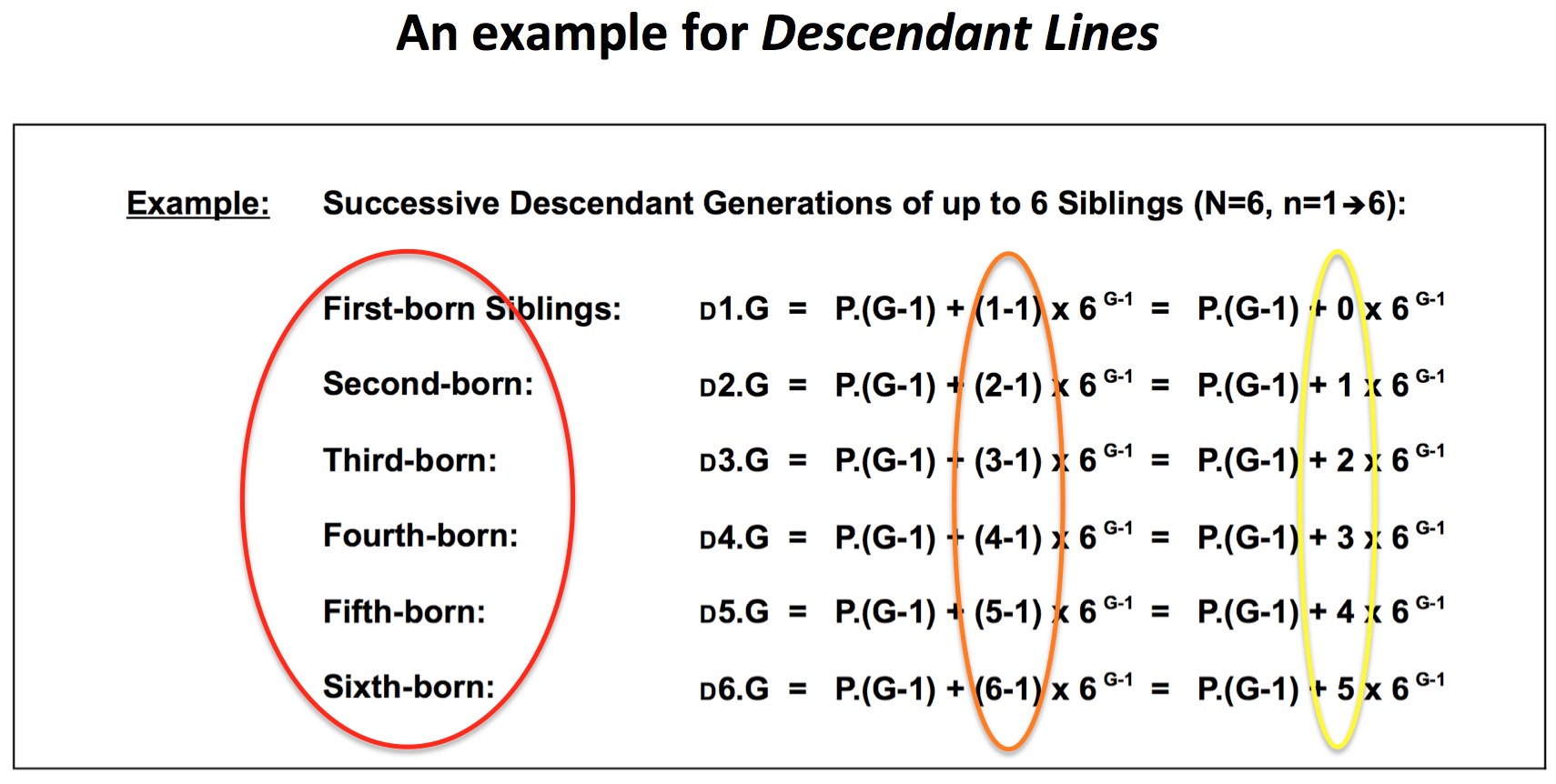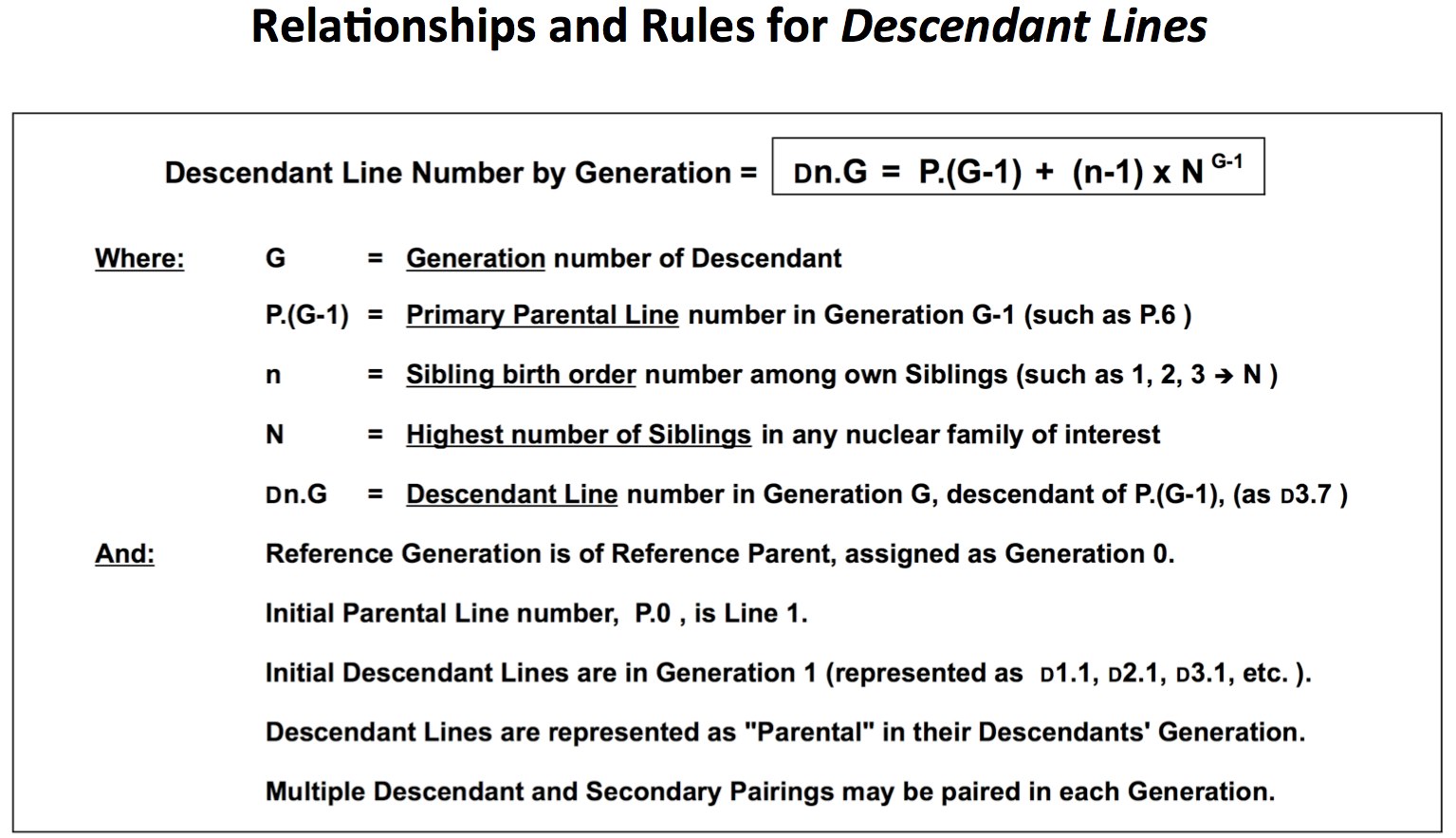Publications and Presentations
Ancestral Lines Publications
There have been two significant Ancestral Lines publications to date. Both have been by the New England Historic Genealogical Society (NEHGS) and can be located through their website, www.AmericanAncestors.org.
The first of these online journal articles was in 2011, entitled “An Ancestral Lines Pairing System: Uniquely Numbering Each Ancestral Line, Generation, Pairing and Sibling.” Material related to this work was presented by Capers McDonald during RootsTech 2012 in Salt Lake City, Utah. This is represented, in part, in the three video presentations below.
The second article was in 2015, called “Matrilineal (mtDNA) Ancestry of Cecilia Lockwood – Presented as a Direct All-Maternal Lineage Using an Ancestral Lines Pairing System.” Related DNA-studies work was presented by McDonald during RootsTech 2014 and is described in part below.
Ancestral Lines Video Presentations
Ancestral Lines was introduced to live audiences with parts of the following three overviews. First is an introduction to the concepts and formats of Ancestral Lines. Second is a step-by-step review of the basic setup and attributes of the pairing system. And, finally, a look at the top features and benefits of the overall approach.
You can access these videos directly below, or as YouTube broadcasts by clicking here. If using YouTube, you will need to use your browser “back” function to return to this Ancestral Lines website. Please don’t hesitate to use the video “pause” button while viewing these texts, charts and diagrams.
Ancestral Lines Introduction – Concepts and Formats
First, below, is a video presentation in m4v file format introducing the new Ancestral Lines Pairing System. Following this is a QuickTime presentation file that is identical except for format. These are only a few minutes long, but will fully load separately before you can start. If Quicktime is your preferred format, hope it’s worth the brief wait! And don’t hesitate to use the “pause” button while viewing
Ancestral Lines Step-By-Step Introduction
Immediately below is a video presentation in m4v file format introducing Ancestral Lines step-by-step, beginning with Lines and progressing through a four-number format for Lines, Generations, Pairings and all Siblings. Following this is a QuickTime presentation, identical except for format. Neither is too lengthy, and both will fully load before you can start. And please don’t hesitate to use the “pause” button while viewing these texts, charts and diagrams.
Ancestral Lines Features and Benefits
Following is a fast-paced video presentation in m4v file format discussing the top Features and Benefits of using Ancestral Lines. This should appeal to both users and potential developers. Beneath that is a QuickTime presentation that is identical except for format. (It’s only a few minutes long, but will fully load before you can start. Hopefully worth the wait!) And please don’t hesitate to use the “pause” button while viewing.
Ancestral and Descendant Lines Tech Talk
The Ancestral Lines Pairing System was created to provide significant new benefits to both professional and non-professional family historians and genealogists. These have been described, with relevant examples, principally with the initial 2011 publication of the system. They have also been topics for presentation and discussion at two RootsTech conferences, in 2012 and recently in 2014.
There has been some call for an up-to-date summary of the logical “relationships and rules,” both from users and potential product developers (of software programs, printed charts and the like). The following mathematically-based information is provided in response.
Relationships and Rules Developed for Ancestral and Descendant Lines
The initial, published ideas for Ancestral Lines included references to alternative presentations for Y-DNA and mtDNA lineages. These have now been elaborated to include use of Line 1 for the mother-of-mother mtDNA lineage, as described in an NEHGS online article in 2015, a commercial software program, and elsewhere on this site.
This has caused most to prefer a more general description of the branching parental lines as “primary” and “secondary,” rather than the gender-specific, “paternal” and “maternal,” as follows:

Similarly, growing interest in autosomal DNA (atDNA) assessments, among other interests, has driven further development of a similarly-programmed Descendant Lines Organizing System. Of course, this has much broader applications in descendant presentations and assessments than only for atDNA cousin studies.
Following is a comparison of formulations for Ancestral Lines and Descendant Lines. This illustrates that Ancestral Lines Pairing is a reduced form of the more general multi-outcome Descendant Lines


Next is a more detailed summary of ideas for Descendant Lines

The Ancestral Lines Pairing System (Ancestral Lines) is freely available for personal record-keeping, research, education, and other non-commercial and commercial uses.
As more user- and developer-generated results are evident, we plan to add them to this or another section of the website. As you have your own “developments” to include, please let us know — we are learning and growing with the applications! Once again, please just email collaborator@ancestrallines.net.
This website and all images it contains are being used for limited and noncommercial purposes, principally colleague and collaborator communications and shared learning.
